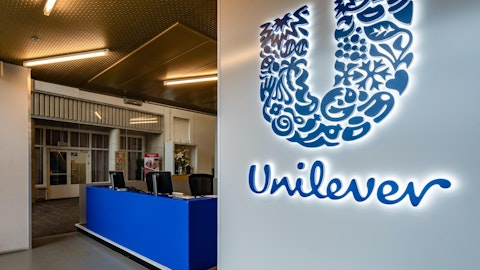5. Amazon.com, Inc. (NASDAQ:AMZN)
Number of Hedge Fund Investors In Q2 2024: 308
Gotham Asset Management’s Q2 2024 Stake: $60.8 million
Amazon.com, Inc. (NASDAQ:AMZN) is an American eCommerce company that has also diversified its business into the lucrative cloud computing market. Its eCommerce site attracted 3.25 billion users in June, which provides the firm with a sizeable customer base and increases its value to merchants and advertisers. Amazon.com, Inc. (NASDAQ:AMZN)’s cloud business and its tech focused approach have also allowed it to bring its very own AI model under its fold. The firm’s partnership with Anthropic has enabled Amazon.com, Inc. (NASDAQ:AMZN) to use the Claude AI model. This enables it to build a variety of internal and external AI driven services on a foundational base, meaning that the company does not have to pay fees to others for using AI. Additionally, Amazon.com, Inc. (NASDAQ:AMZN) is also working on all three layers of the AI stack, from developing its own chips, to building a foundation model and developing AI applications. This could position the firm nicely to benefit from all aspects of AI demand in the future.
Amazon.com, Inc. (NASDAQ:AMZN’s management provided key details for its AI work during the Q2 2024 earnings call:
“You can see this philosophy in the primitive building blocks we’re building at all three layers of the Gen AI stack. At the bottom layer, which is for those building generative AI models themselves, the cost to compute for training and inference is critical, especially as models get to scale. We have a deep partnership with NVIDIA and the broadest selection of NVIDIA instances available, but we’ve heard loud and clear from customers that they relish better price performance. It’s why we’ve invested in our own custom silicon in Trainium for training and Inferentia for inference.
And the second versions of those chips, with Trainium coming later this year, are very compelling in price performance. We’re seeing significant demand for these chips. These model builders also desire services that make it much easier to manage the data, construct the models, experiment, deploy to production, and achieve high-quality performance, all while saving considerable time and money. That’s what Amazon SageMaker does so well, including its most recently launched feature called HyperPods that changes the game and networking performance for large models. And we’re increasingly seeing model builders standardized on SageMaker. While many teams will build their own models, lots of others will leverage somebody else’s frontier model, customize it with their own data and seek a service that provides broad model selection and great generative AI capabilities.
This is what we think of as the middle layer, what Amazon Bedrock does and why Bedrock has tens of thousands of companies using it already. Bedrock has the largest selection of models, the best generative AI capabilities in critical areas like model evaluation, guardrails, RAG and agenting, and then makes it easy to switch between different model types and model sizes. Bedrock has recently added Anthropic’s Claude 3.5 models, which are the best performing models on the planet. Meta’s new Llama 3.1 models and Mistral’s new Large two models. And Lama’s and Mistral’s impressive performance benchmarks in open nature are quite compelling to our customers as well. At the application or top layer, we’re continuing to see strong adoption of Amazon Q, the most capable generative AI powered assistant for software development and to leverage your own data.
Q has the highest known score and acceptance rate for code suggestions, but it does a lot more than provide code suggestions. It tests code, outperforms all other publicly benchmarkable competitors on catching security vulnerabilities and leads all software development assistants on connecting multiple steps together and applying automatic action. It also saves development teams time and money on the muck nobody likes to talk about. For instance, when companies decide to upgrade from one version of a framework to another, it takes development teams many months, sometimes years, burning valuable opportunity costs and churning developers who hate this tedious, though important work. With Q’s code transformation capabilities, Amazon has migrated over 30,000 Java JDK applications in a few months, saving the company $260 million and 4,500 developer years compared to what it would have otherwise cost.”





